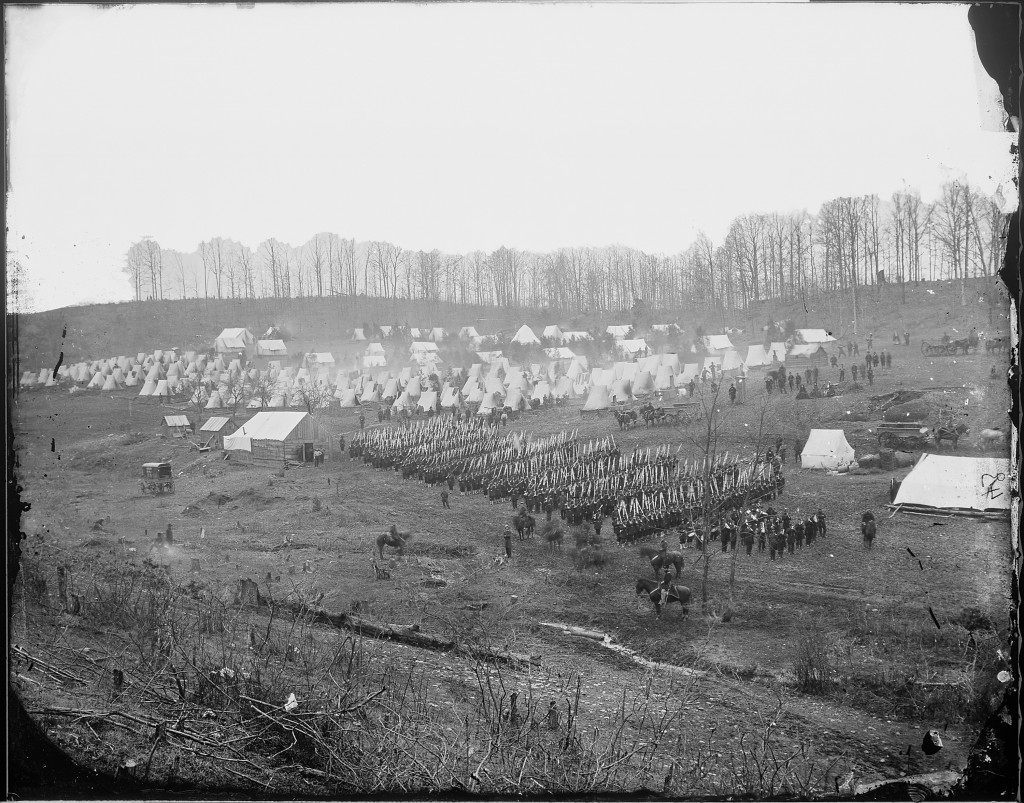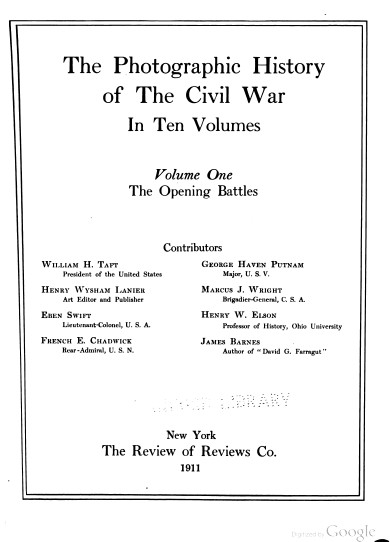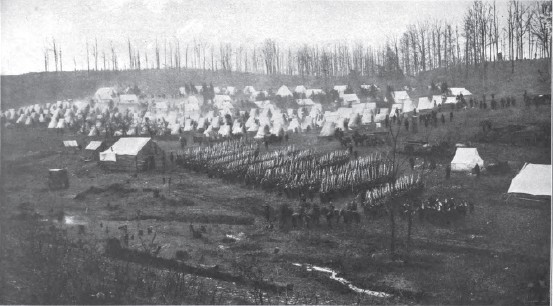The Opening Battles
Posted By Norman Gasbarro on January 31, 2011
(Part 2 of 12). Contents of Volume I of The Photographic History of the Civil War: The Opening Battles
The year 1911 was the 50th anniversary of the beginning of the Civil War. In a memorial to the war, a ten volume set of books was published entitled The Photographic History of the Civil War. This series attempted, through photographs, to do what no other books had previously done – to bring the war close and personal through previously unpublished and unavailable photographs. The series was edited by Francis Trevelyan Miller.
This post is part 2 of a 12 part series and will focus on the contents of Volume I, The Opening Battles.
Prefaces: “Photographing the Civil War,” Henry Wysham Lanier. “The Photographic Record as History,” George Haven Putnam. “The Federal Navy and the South,” French E. Chadwick. “Records of the War Between the States,” Marcus J. Wright. “The Strategy of the Civil War Leaders,” Ellen Swift.
Part I: The First of the Great Campaigns.
“Bull Run – The Volunteers Face Fire.”
Part II: Down the Mississippi Valley.
“The Fall of Fort Henry and Fort Donelson,” Henry W. Elson. “Shiloh – The First Grand Battle,” Henry W. Elson. “New Madrid and Island Number Ten,” Henry W. Elson. “New Orleans – The Navy Helps the Army,” James Barnes. “Fort Pillow and Memphis – Gunboats and Batteries,” Henry W. Elson.
Part III: “The Struggle for Richmond,” Henry W. Elson. “Yorktown – Up the Peninsula,” Henry W. Elson. “Fair Oaks – In Sight of Richmond,” Henry W. Elson. “The Shenandoah and the Alarm at Washington,” Henry W. Elson. “Seven Days – The Confederate Capital Saved,” Henry W. Elson.
Part IV: “Engagements of the Civil War up to July, 1862,” by George L. Kilmer.
One picture that is applicable to this Civil War Research Project is the following:
The above photograph was previously presented as part of the story of John C. Gratz (see post on Corp. John C. Gratz and the 96th Pennsyvania Infantry). However, in comparing the two photographs, it is clear that the one from The Photographic History of the Civil War is cropped and because it is a printed version of the photograph, the resolution is not as good as the one previously presented which was from the digital collection of the National Archives. The National Archives version is shown below for comparison:
 By clicking on both pictures, the resolution becomes more obvious. It is important to recognize that the technology available in 1911 to reproduce photographs in print was not as good as the technology available today – and even more important to recognize that the picture above from The Photographic History of the Civil War is from a digital version (PDF) of a printed version of an original photograph. If the original negatives are available, it is always to refer to them and prints from them. Absent the original negatives, high resolution digital copies of the original prints (high quality prints made from the original negatives) are the next best option. However, many of the “thousands” of images in The Photographic History of the Civil War will be next to impossible to obtain, so use of the digital versions (PDF) of the printed copies will be the only recourse for genealogical researchers.
By clicking on both pictures, the resolution becomes more obvious. It is important to recognize that the technology available in 1911 to reproduce photographs in print was not as good as the technology available today – and even more important to recognize that the picture above from The Photographic History of the Civil War is from a digital version (PDF) of a printed version of an original photograph. If the original negatives are available, it is always to refer to them and prints from them. Absent the original negatives, high resolution digital copies of the original prints (high quality prints made from the original negatives) are the next best option. However, many of the “thousands” of images in The Photographic History of the Civil War will be next to impossible to obtain, so use of the digital versions (PDF) of the printed copies will be the only recourse for genealogical researchers.
For a free download from Google Books, click here and select “PDF” in the upper right corner of the page. When the “PDF” file opens in your reader, save the file to disk. Use of the file is subject to restrictions that are spelled out on the first page of the PDF. Essentially, the restrictions specify that the digital book may be used for personal, non-profit use only and that the Google Books “watermark” should not be removed from the pages.
Tomorrow, part 3 of this series will examine Volume II, Two Years of Grim War.
 ;
;




Comments